When it comes to choosing a feline companion, the Ragdoll and Himalayan breeds often come up as top contenders. Both are known for their beautiful appearances and charming personalities, but which one is the right fit for you? Let’s dive into a detailed comparison Ragdoll Cat vs. Himalayan: to help you to make an informed decision.
History and Origin
Ragdoll Cats: History and Background
The Ragdoll breed originated in the 1960s in Riverside, California. Ann Baker, a breeder, developed this breed by crossing a white Persian cat with a Birman or Burmese cat. The result was a cat with striking blue eyes, a silky coat, and a docile temperament.
Himalayan Cats: History and Background
Himalayan cats, also known as “Himmies,” were developed in the early 20th century. They are a cross between Siamese and Persian cats, aiming to combine the Persian’s luxurious coat with the Siamese’s color points. The breed gained recognition in the 1950s and has been a favorite among cat enthusiasts ever since.
Physical Characteristics
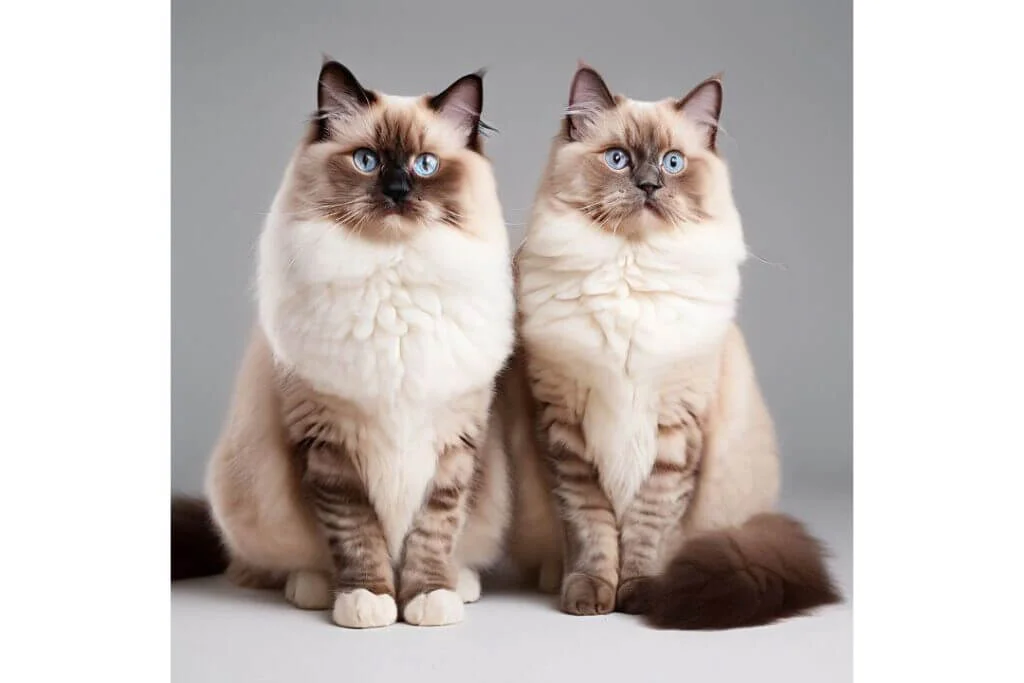
Size and Weight Comparison
Ragdolls are one of the largest domesticated cat breeds. Males typically weigh between 15 to 20 pounds, while females weigh between 10 to 15 pounds. Himalayans, on the other hand, are medium-sized cats, with males weighing around 10 to 14 pounds and females between 8 to 12 pounds.
Coat Color and Pattern Differences
Ragdolls have a semi-longhaired coat that comes in several patterns: colorpoint, mitted, and bicolor. Their coat colors can vary, including seal, blue, chocolate, lilac, red, and cream. Himalayans have a long, thick coat with color points on the ears, face, paws, and tail. Their color points include seal, blue, chocolate, lilac, flame, and tortoiseshell.
Eye Color Variations
Ragdolls are renowned for their striking blue eyes, which are one of their most distinctive features. Himalayans also have beautiful blue eyes, but the intensity can vary more compared to Ragdolls.
Personality and Temperament
Ragdoll Cats: Personality Traits
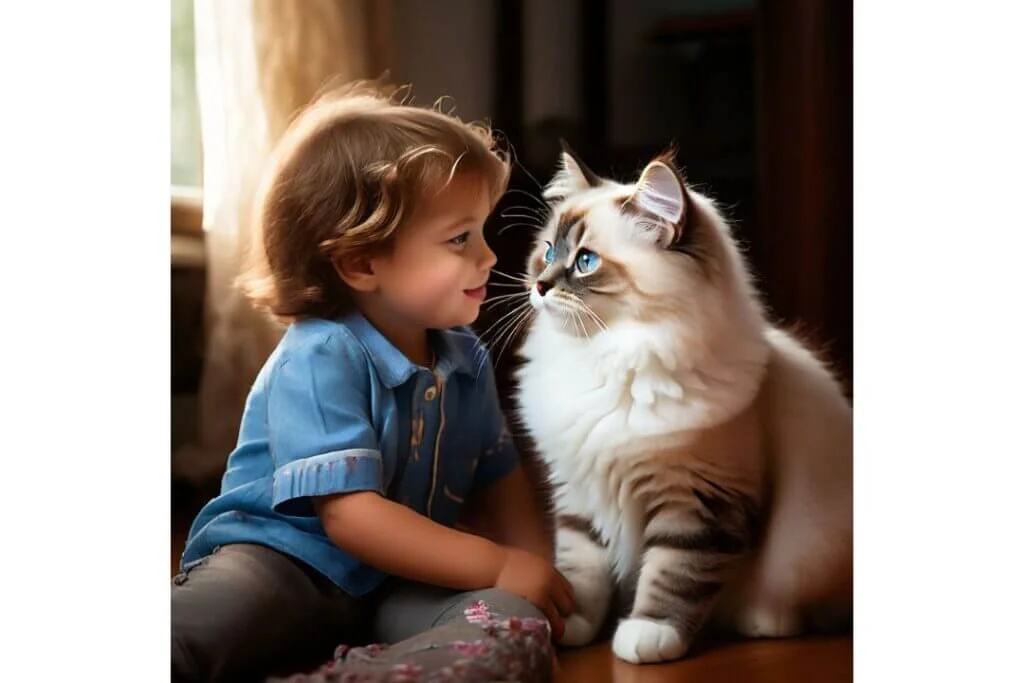
Ragdolls are known for their affectionate and placid nature. They are often described as “puppy-like” because they enjoy following their owners around and being involved in their activities. Ragdolls are generally relaxed and tolerant, making them great companions for families with children.
Himalayan Cats: Personality Traits
Himalayans share the Persian’s calm and gentle disposition. They are affectionate but can be more reserved compared to Ragdolls. Himalayans enjoy attention but may not seek it out as actively. They tend to form strong bonds with their owners and can be quite playful when they feel secure.
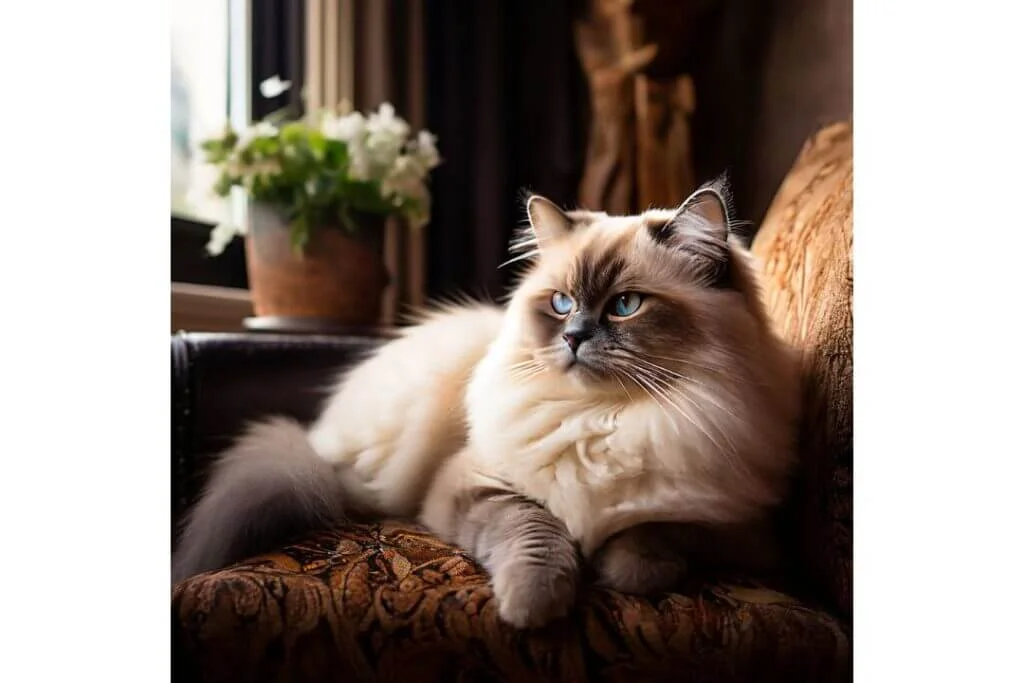
Comparison of Temperaments
While both breeds are affectionate, Ragdolls are typically more outgoing and sociable, whereas Himalayans may take some time to warm up to new people and environments. Ragdolls’ laid-back nature makes them ideal for families with children and other pets, while Himalayans may prefer a quieter household.
Grooming and Maintenance
Grooming Needs of Ragdoll Cats
Ragdolls have a semi-longhaired coat that is relatively easy to maintain. Weekly brushing is usually sufficient to prevent matting and reduce shedding. Their coats are less prone to tangling compared to other longhaired breeds.
Grooming Needs of Himalayan Cats
Himalayans require more intensive grooming due to their long, dense coats. Daily brushing is recommended to prevent matting and tangles. Regular baths can help keep their coat clean and reduce shedding. Their facial structure may also require frequent cleaning to avoid tear staining.
Maintenance Comparison
Ragdolls are lower maintenance in terms of grooming compared to Himalayans. If you prefer a breed that requires less grooming effort, Ragdolls might be the better choice.
Health and Lifespan
Common Health Issues in Ragdolls
Ragdolls are generally healthy but can be prone to certain genetic conditions such as hypertrophic cardiomyopathy (HCM), a form of heart disease. Regular veterinary check-ups and screenings are essential to ensure their health.
Common Health Issues in Himalayans
Himalayans may face health issues common to both Persian and Siamese breeds. These include polycystic kidney disease (PKD), respiratory problems due to their flat faces, and dental issues. Regular vet visits and proactive care are crucial.
Lifespan Comparison
Both breeds have similar lifespans, typically ranging from 12 to 15 years. With proper care, a Ragdoll or Himalayan can live a long and healthy life.
Ragdoll vs Siberian Cat: A Comprehensive Comparison
Why Are Ragdoll Cats Called Ragdolls: Uncovering the 5 Reasons Behind the Name
“Why Are Ragdoll Cats So Expensive? 5 Reasons Behind the High Costs”
Exercise and Activity Levels
Activity Levels in Ragdoll Cats
Ragdolls are moderately active. They enjoy interactive play and can be quite playful, but they also appreciate lounging and cuddling with their owners. They are not overly demanding in terms of exercise.
Activity Levels in Himalayan Cats
Himalayans are generally less active compared to Ragdolls. They enjoy short bursts of play but are content with a more sedentary lifestyle. They can be playful, especially when they have bonded with their owners, but they do not require extensive exercise.
Diet and Nutrition
Dietary Needs of Ragdoll Cats
Ragdolls require a balanced diet rich in protein to maintain their muscular build and energy levels. High-quality commercial cat food, whether wet or dry, is suitable. Portion control is important to prevent obesity.
Dietary Needs of Himalayan Cats
Himalayans also need a diet high in protein and low in carbohydrates. Their diet should support their coat health, so foods rich in omega-3 and omega-6 fatty acids are beneficial. Regular feeding schedules and portion control are crucial.
Living Environment
Best Living Conditions for Ragdoll Cats
Ragdolls thrive in a loving and interactive environment. They enjoy being part of family activities and can adapt well to indoor living. Providing them with plenty of toys and interactive playtime keeps them happy.
Best Living Conditions for Himalayan Cats
Himalayans prefer a calm and quiet environment. They do well in indoor settings where they feel safe and secure. A comfortable space with cozy resting spots is ideal for a Himalayan cat.
Compatibility with Families and Other Pets
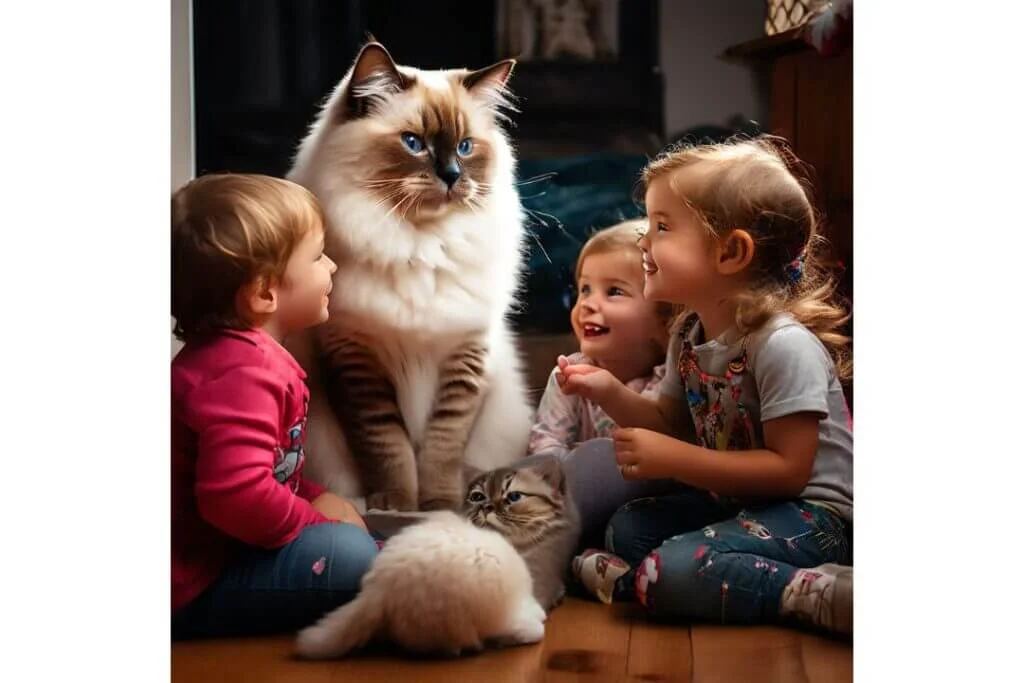
Ragdolls and Families
Ragdolls are excellent family pets. Their gentle and tolerant nature makes them great with children and other pets. They enjoy social interaction and are known to be very affectionate.
Himalayans and Families
Himalayans can be good family pets but may be better suited to families with older children or no children. They can be sensitive to loud noises and sudden movements, so a quieter household is preferable.
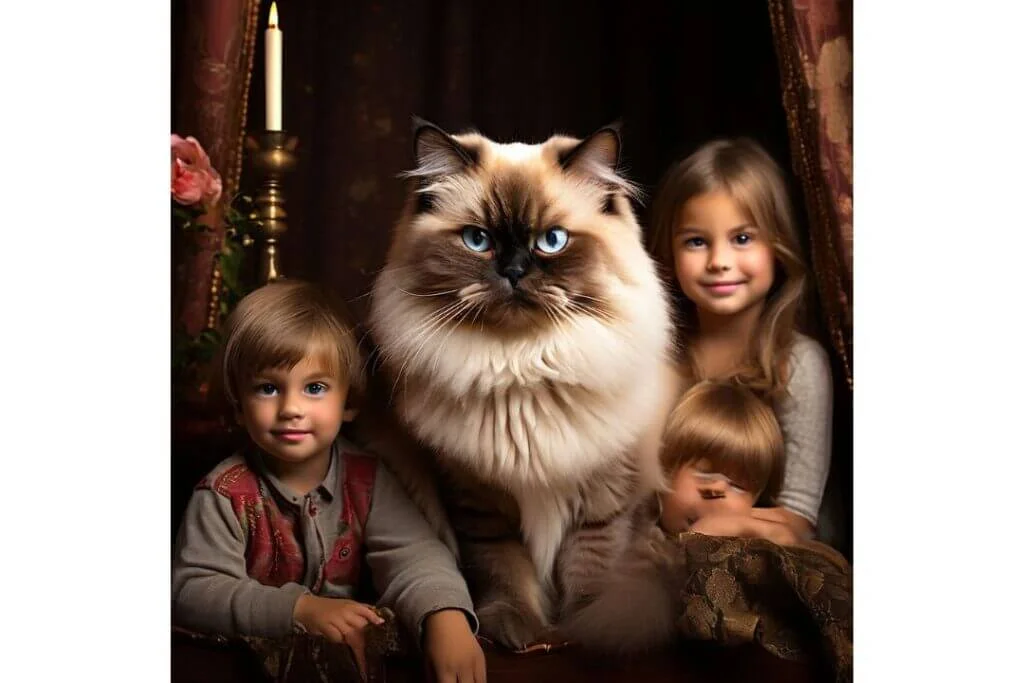
Compatibility Comparison
Ragdolls are generally more adaptable to various household dynamics, while Himalayans may thrive in more stable and serene environments.
Training and Intelligence
Trainability of Ragdoll Cats
Ragdolls are intelligent and can be trained to perform simple tricks and commands. They are responsive to positive reinforcement and enjoy interactive toys and puzzles.
Trainability of Himalayan Cats
Himalayans are also intelligent but may be less inclined to perform tricks. They can be trained with patience and consistency, especially when motivated by treats and affection.
Intelligence Comparison
Both breeds are intelligent, but Ragdolls may be more eager to learn and engage in training activities compared to Himalayans.
Cost and Availability
Cost of Acquiring a Ragdoll Cat
Ragdoll kittens typically cost between $800 to $2,500, depending on the breeder, pedigree, and location. The cost can vary significantly based on these factors.
Cost of Acquiring a Himalayan Cat
Himalayan kittens range from $500 to $2,000. Like Ragdolls, the price depends on the breeder, pedigree, and specific traits of the kitten.
Availability Comparison
Both breeds are relatively easy to find through reputable breeders. However, Ragdolls may be more widely available due to their increasing popularity.
Popularity and Breed Recognition
Popularity of Ragdoll Cats
Ragdolls have gained immense popularity over the past few decades. They are often featured in cat shows and have a strong presence in cat-loving communities.
Popularity of Himalayan Cats
Himalayans have long been admired for their beauty and elegance. They have a dedicated following and are frequently seen in cat shows and breed competitions.
Breed Recognition and Awards
Both Ragdolls and Himalayans are recognized by major cat registries like the Cat Fanciers’ Association (CFA) and The International Cat Association (TICA). They have won numerous awards and accolades for their breed standards.
Pros and Cons
Pros and Cons of Owning a Ragdoll Cat
Pros:
- Affectionate and social
- Great with children and other pets
- Lower grooming needs
Cons:
- Prone to certain genetic health issues
- Requires social interaction
Pros and Cons of Owning a Himalayan Cat
Pros:
- Beautiful and elegant appearance
- Calm and gentle nature
- Strong bond with owners
Cons:
- High grooming needs
- Potential health issues due to facial structure
Conclusion: Ragdoll Cat vs. Himalayan:
Choosing between a Ragdoll and a Himalayan cat depends on your lifestyle and preferences. If you want a sociable, easy-going cat that gets along well with kids and other pets, a Ragdoll might be the perfect fit. On the other hand, if you prefer a serene, regal companion that requires more grooming but offers deep affection, a Himalayan could be your ideal pet. Both breeds have unique qualities that make them wonderful additions to the right home.
FAQs
Which breed is better for first-time cat owners? Ragdolls are generally better for first-time cat owners due to their easy-going nature and lower grooming needs.
Do Ragdolls and Himalayans get along with dogs? Yes, both breeds can get along with dogs if properly introduced and socialized from a young age.
Are Ragdoll cats hypoallergenic? No, Ragdolls are not hypoallergenic. They shed and produce dander, which can trigger allergies.
How often should I groom a Himalayan cat? Himalayans require daily grooming to maintain their long, dense coat and prevent matting.
What is the average cost of maintaining these breeds? The average cost includes food, grooming, veterinary care, and other essentials. Expect to spend around $500 to $1,000 annually, depending on specific needs and health issues.

